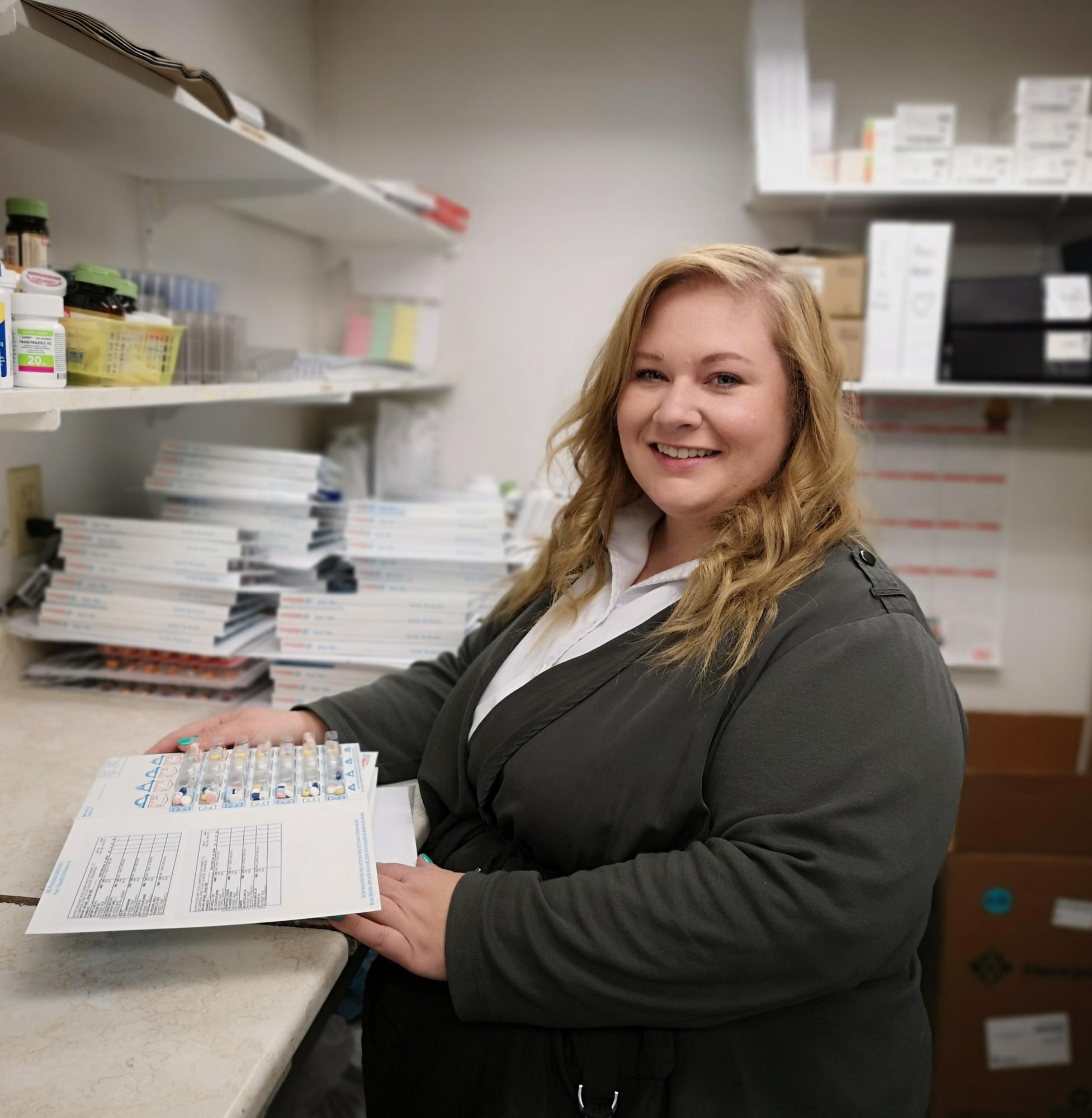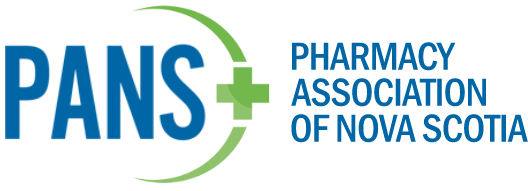Pharmacy Technician Megan Sharpe initially considered becoming a pharmacist, but upon examining the potential future opportunities for pharmacy technicians, she decided to follow that path towards licensure.
The first step Megan took was to attend Cape Breton Business College, which had a certified pharmacy technician training program at the time, in 2011. Upon graduation, Megan then had to take the first of the qualifying examines for her license, the Pharmacy Examining Board of Canada Exam (PEBC), in Ottawa because there were not any exams scheduled in her home province of Nova Scotia when she graduated. She then had to wait an additional year before her next qualifying exam, the Nova Scotia Jurisprudence Examination.
“I did the tests as soon as they came out,” says Megan. She has been a licensed pharmacy technician for three years now and, in that short time, she has seen her scope of practice expand.
“She has been an incredible asset in taking over some of the technical duties and allowing pharmacists to engage more in clinical practice,” says Sarah Boutlier, who is a pharmacist, pharmacy owner, and Megan’s employer. “She is smart, efficient and highly personable, and empathetic with our customers.”
With Megan as part of the pharmacy team, performing some of the tasks that prior to the establishment of the pharmacy technician designation only pharmacists used to be able to do, pharmacists can leave the “technical check” to Megan. A technical check includes checking the accuracy of the information entered into the pharmacy software system, the label, and the contents of the vial or package. This is done after a pharmacist performs their clinical check (which includes an assessment for drug interactions, allergies, as well as reviewing previous medications for the same use and ensuring it is the most appropriate drug, dose and duration for your condition). Now that pharmacists do not have to do both checks, it frees up pharmacists’ time to provide additional pharmacy services, such as assessments of minor ailments, chronic disease management programs, prescription renewals, and injections.
As of February, pharmacy technicians can now also witness patients’ taking methadone and suboxone, something which only pharmacists had the authority to do in the past. This new authority is providing Megan with even more job satisfaction.
“I like to be able to talk to the patients,” says Megan. “They are adults trying to recover and they are all struggling with their issues and we can help them.”
With this new authority, Megan is getting the opportunity to know her patients even better.
“Her new role in witnessing methadone and suboxone ingestion has allowed her to grow her relationship with our patients to an even greater degree,” says Sarah.
Megan is eager to expand her role on the pharmacy team and says she is fortunate to work in an environment where she is encouraged to do so.
“As soon as something comes out (Sarah) lefts me do it,” says Megan. “My co-workers are awesome.”
There have also been some rumours that pharmacy technicians will eventually have the authority to provide injections. If this happens, Megan is ready to help the team in any way she can.
When asked what her favourite thing about being a pharmacy technician is, she says, “Being able to take the stress off the pharmacists. They don’t have to take on everything anymore.”

